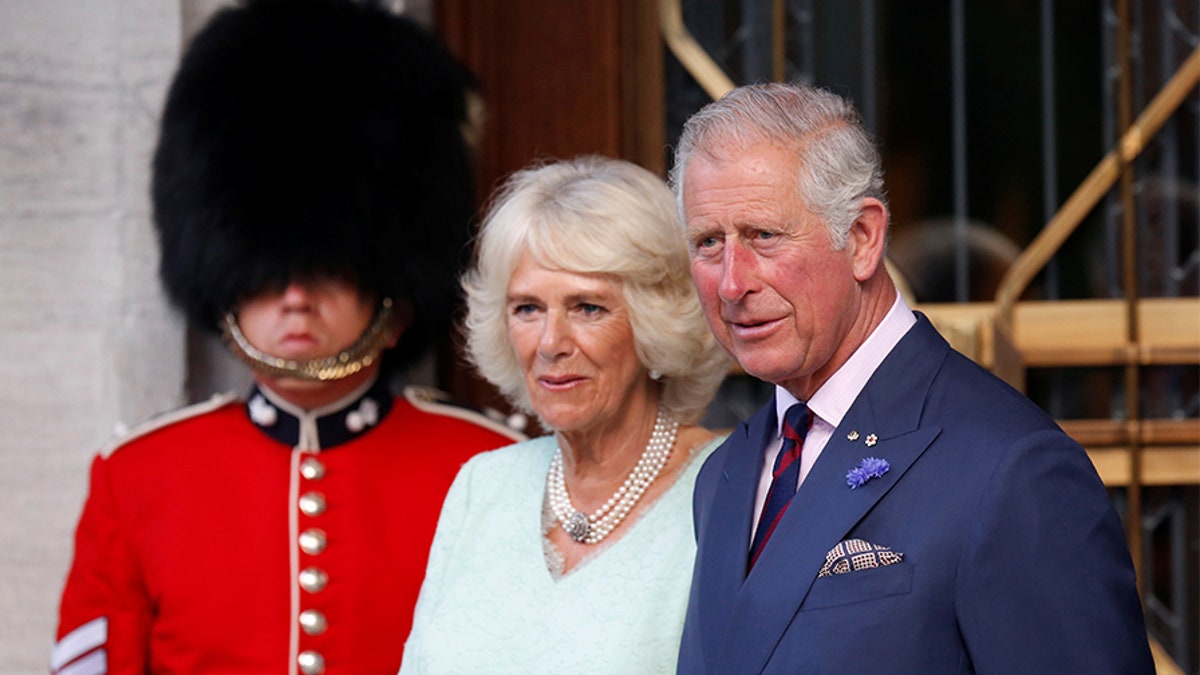The British monarchy, steeped in centuries of tradition, has always been a focal point for intrigue and speculation. But recent developments behind the gilded doors of Buckingham Palace have left even seasoned royal watchers stunned. As Queen Camilla transitioned from being the Queen Consort to simply “Queen,” many saw it as a defining moment in her journey—a crowning achievement after decades of public scrutiny and private battles. However, the title upgrade may have come with a twist no one expected: a demotion in influence.
King Charles III, in a strategic move aimed at modernizing the monarchy, has shifted significant responsibilities to Prince William and Princess Catherine, leaving Camilla feeling sidelined. While William and Catherine now carry the mantle of the monarchy’s future, questions abound about Camilla’s diminishing role. Is the Queen’s ascension merely ceremonial, or is it part of a broader restructuring of royal power?

A Promised Role That Fell Short
Camilla’s rise to the title of Queen was seen as the culmination of decades of work to earn public and royal acceptance. Once vilified as “the other woman” in Charles and Diana’s tumultuous marriage, she endured years of tabloid backlash and public disapproval. Over time, through measured appearances and dedicated charitable work, she rehabilitated her image. By the time Charles ascended the throne, Camilla had largely won over the public, and her promotion to Queen Consort in 2022 was seen as a signal that past scandals had been put to rest.
But despite this achievement, Camilla’s expectations of her role have been far from realized. Historically, queens shared in some responsibilities of governance and public representation, but King Charles has seemingly chosen a different path. Instead of granting Camilla greater influence, he has concentrated power with William and Catherine, who are increasingly seen as the monarchy’s future.
This strategic delegation has left Camilla feeling hollow in her role. While she may hold the title of Queen, the duties and responsibilities she anticipated have been handed to others. For her, the promotion feels less like an elevation and more like a symbolic gesture without substance.
The Rise of William and Catherine
At the heart of this power shift is the growing prominence of the Prince and Princess of Wales. William and Catherine embody the monarchy’s future—a modern, relatable couple balancing royal duties with family life. Their charm and ability to connect with the public have made them icons of a reimagined monarchy, one that resonates with younger generations while maintaining its traditional core.
Catherine’s graceful presence and William’s steady leadership have cemented their popularity. They are the faces of a monarchy that strives to stay relevant in an ever-changing world. For Camilla, however, their ascent is bittersweet. While she recognizes their importance, their rise has overshadowed her own role, leaving her to question her place in the royal hierarchy.
Friction Beneath the Surface
Camilla’s sidelining has not only created personal frustration but also fueled underlying tensions within the royal family. Her relationship with Catherine, though cordial in public, has long been rumored to be strained. Reports suggest that Camilla initially had reservations about Catherine’s suitability for William, rooted in her more traditional, aristocratic views. These early misgivings have given way to what some insiders describe as an unspoken rivalry, with Catherine’s increasing prominence exacerbating the divide.
Meanwhile, King Charles’s decisions to entrust key roles to William and Catherine have raised questions about the Queen’s influence behind the scenes. The apparent favoritism toward the younger generation has left Camilla feeling increasingly irrelevant—a sentiment compounded by whispers of broader tensions within the royal household.
The Weight of Modernization
King Charles’s strategic vision for the monarchy centers on modernization—a necessity in an era where tradition alone cannot sustain public interest. By elevating William and Catherine, Charles is ensuring a smooth transition of power and leveraging their widespread appeal to solidify the monarchy’s relevance.
However, this vision comes at a personal cost for Camilla. Her role, shaped by centuries of tradition, is increasingly at odds with the monarchy’s evolving direction. As the institution pivots to focus on William and Catherine, Camilla finds herself grappling with the constraints of a more ceremonial position.
Camilla’s Emotional Struggles
For Camilla, the emotional toll of her diminishing role cannot be overstated. Her journey to the throne has been one of perseverance and quiet resilience. Yet, the reality of being sidelined has left her feeling unfulfilled. Close confidants describe a woman who, despite her composed public persona, is struggling with feelings of betrayal and exclusion.
Adding to her frustration is the public’s lingering perception of her past, particularly her role in Charles and Diana’s marriage. While she hoped her promotion to Queen would mark a turning point, these perceptions continue to cast a shadow over her reign.
An Uncertain Future
As the monarchy prepares for its inevitable transition, Camilla faces an ambiguous future. Charles’s advancing age and the increasing responsibilities of William and Catherine mean that the Queen’s influence may wane even further. The prospect of becoming a ceremonial figure looms large, leaving Camilla to question her ultimate legacy.
Will she find a way to assert herself in a monarchy that seems to be moving on without her, or will history remember her as a Queen overshadowed by the younger generation? For Camilla, the road ahead is as uncertain as it is challenging, and the answers to these questions will define her place in the annals of royal history.





